► 1989 Audi Quattro 20v review
► We test original Ur Quattro
► Where sports AWD legend began
Like footballers or rock stars, a single word suffices to identify the most famous cars. Quattro is very much an icon of the Audi range – a model synonymous with Ingolstadt’s love affair with all-wheel drive that begat a whole family of 4wds from humble A1 to range-topping Q8 in today’s line-up.
But what does the original, or Ur, Audi Quattro feel like today, 42 years after it first appeared at the 1980 Geneva motor show? We’ve spent some time in this pristine 84,979-mile Audi UK heritage example to write a current-day Audi Quattro review.
Driving the Classics is an occasional series on CAR magazine, where we revisit the most iconic makes and models to see what all the fuss is about. Read on for our warts ’n’ all road test of one of the final Audi Quattros ever registered in the UK, driven here in upgraded 20-valve spec.
Driving the classics: our Audi Sport Quattro review
Audi Quattro review: ancient and modern
The Audi Quattro was sold in the UK from 1980-1991, placing it in prime modern classic territory: later models saw capacity grow from 2144cc to 2226cc, benefited from an improved 4wd system with a more sophisticated Torsen differential and added four-valves-per-cylinder – making them the sweetspot where modern engineering brings creature comforts and serious performance allied to a dose of squareish Eighties cool. Classic kudos is assured with an Audi Ur Quattro.
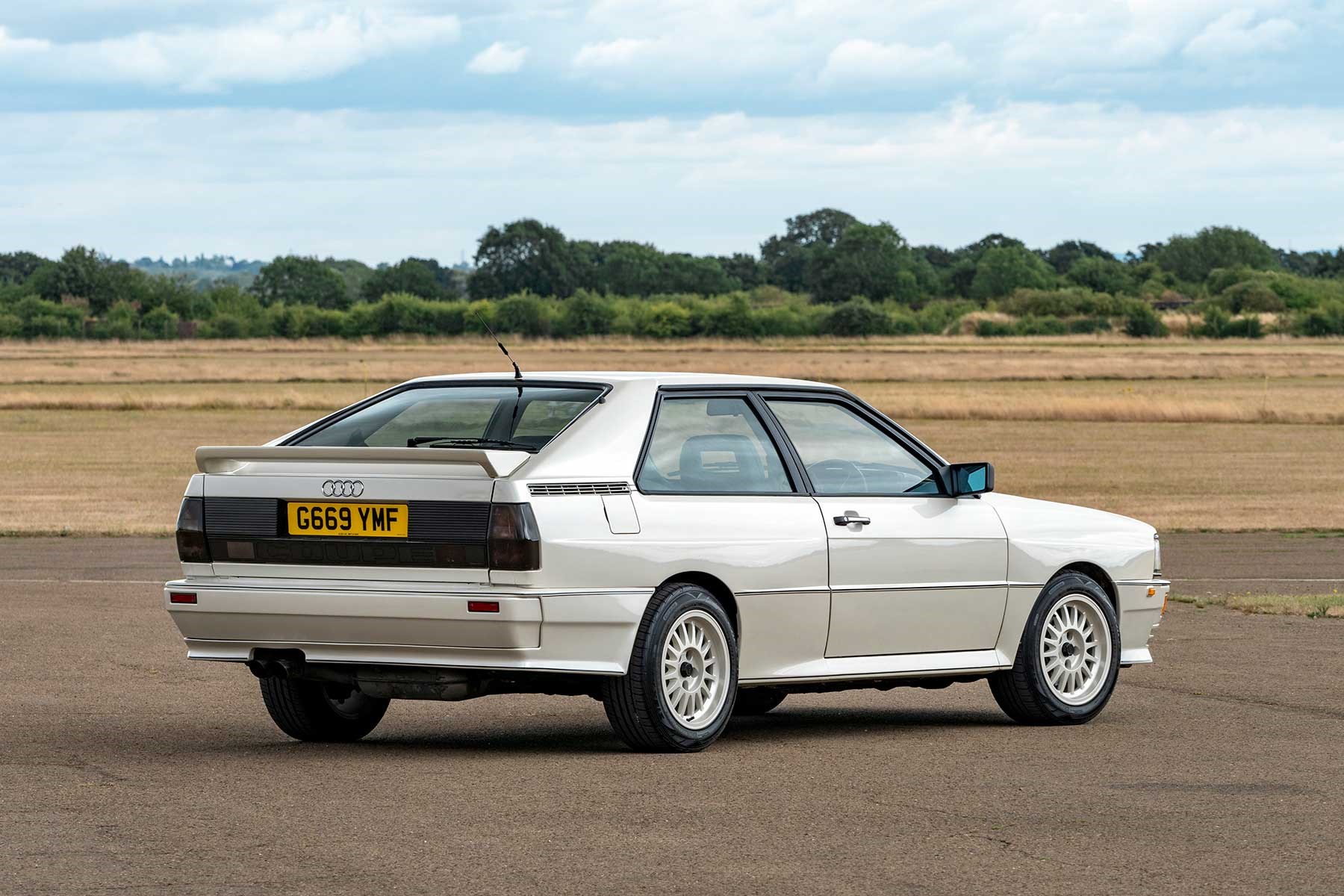
It’s a beguiling shape that’s stood the test of time: all set-square sharp lines and gently bulging wheelarches wrapped around impossibly cool, but modestly sized, white-painted 15-inch alloys. It’s at once muscular, purposeful, simple and very of its time.
One of the benefits of those perpendicular lines is excellent visibility for the driver. Slender pillars and that upright, boxy shape bring a good view all-round that still surprises those of us used to over-pillared moderns. The angular bonnet ahead and Quattro graphic reversed out of the rear window heating element behind are views of which you will never tire…
The interior
Digital dials set the cockpit’s 80s theme – with red digi speedo, tacho, fuel gauge and coolant temprerature dominating the instrument binnacle. Unlike certain British efforts from this era, the Audi’s electronic read-out is actually clear to read and use. It all works well and provides an omnipresent reminder that you’re driving a Thatcher-era legend.
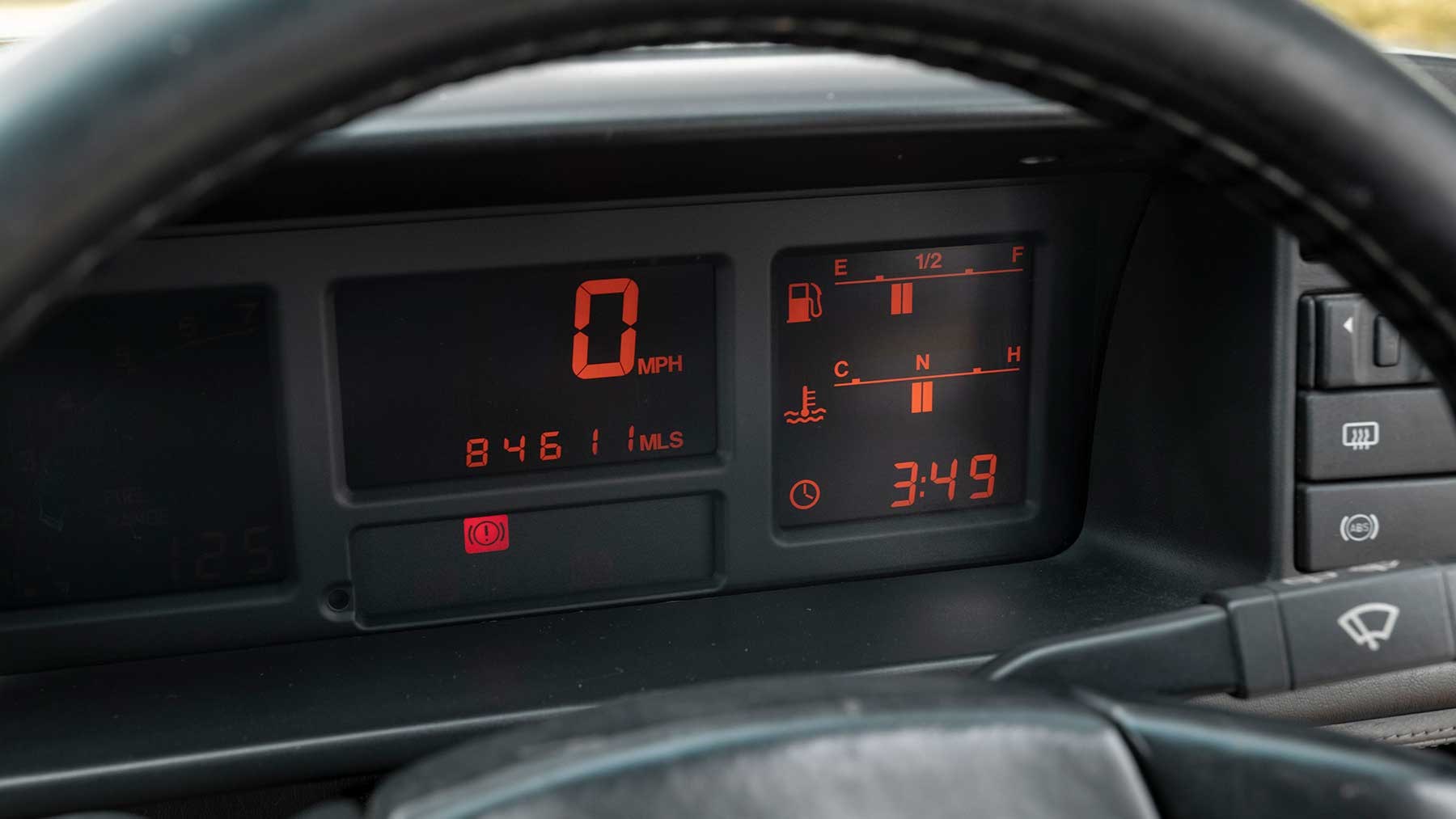
Graphics for the voltmeter, oil temp gauge and differential status down by the gearlever could be by Kraftwerk and we were slightly surprised that the Blaupunkt stereo wasn’t stuck on T’Pau or Belinda Carlisle. Tellingly, all the electrical features on this 33-year-old example work perfectly.
It’s also a reminder of how far German quality has come. This is from the era of sturdy, durable interiors – soft-touch plastics hadn’t really been invented yet and the Quattro’s dash betrays plenty of creaks, squeaks and rattles. It’s pleasingly durable and tough, though, a bit like a modern Subaru’s, and the seats are plump and comfortable.
Omissions? Not much. You get electric windows and mirrors, a rear wiper, but no air-conditioning (most Quattros with it have had it retrofitted).
Fire up the Quattro!
Oh alright then. Turn a thin, old-fashioned key in the ignition barrel and the five-cylinder lump starts first time, every time, settling to a smooth, burbly idle. One of the untold joys of the Quattro is just how easy it is to live with: unimpinged visibility, clever Bosch Motronic injection and engine management, a cohesive drivetrain and a friendly clutch action make it a cinch to select first gear and pull away with minimal fuss.
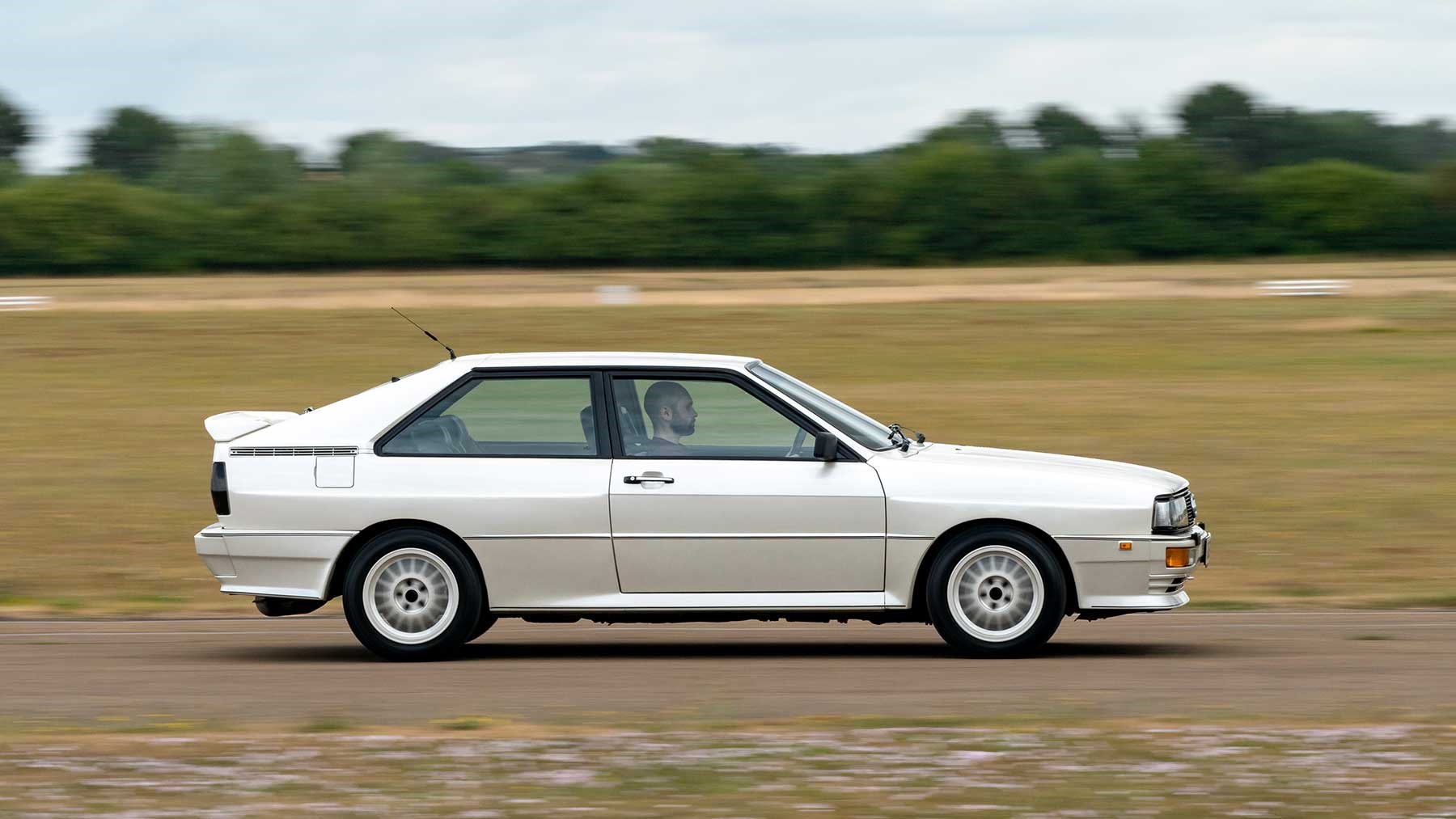
The three-spoke steering wheel on later 20v models is divine: simple, unadorned of buttons or complications – just lashings of smooth leather, an Audi Sport badge and some modest sculpting to encourage old-school quarter-to-three driving grip. This was before the era of widespread airbags, or Audi’s Procon-Ten safety system for that matter.
Picking gears in the five-speed gearbox is straightforward (though navigating the detent on reverse takes a bit of practice). The change itself is mechanical, precise and enjoyable in action, but doesn’t like to be rushed. Slow and accurate is best.
The ratios suit the powertrain. The 20-valve head only appeared on later Quattros after first debuting in the Audi 200, bringing more torque lower down the rev range for greater flexibility. The greatest compliment I can pay is to observe how performance is urgent and rapid, even by today’s standards.

Audi’s claim of 6.3sec 0-62mph feels quite credible and once you skip the laidback torque of 228lb ft peaking at a languid 1950rpm and chase the 217bhp powerband nearer 6000rpm then the five-pot comes to life.
Past five on the digital rev counter and the character changes, hurtling the 1.3-tonne Quattro forwards with gusto, the trademark warbling soundtrack fizzing with energy, although it’s never quite as loud as your Group B memories may imagine.
Ride and handling
The more you drive the Quattro, the more you appreciate its modern tendencies. Many’s a time you climb into older 70s, 80s or 90s vehicles and bemoan the feeble brakes. Not so here. The 20v Audi coupe has surprisingly strong anchors with powerful reserves of deceleration – and the security of early-generation ABS to back up emergency stops. It remains stable under hard braking.
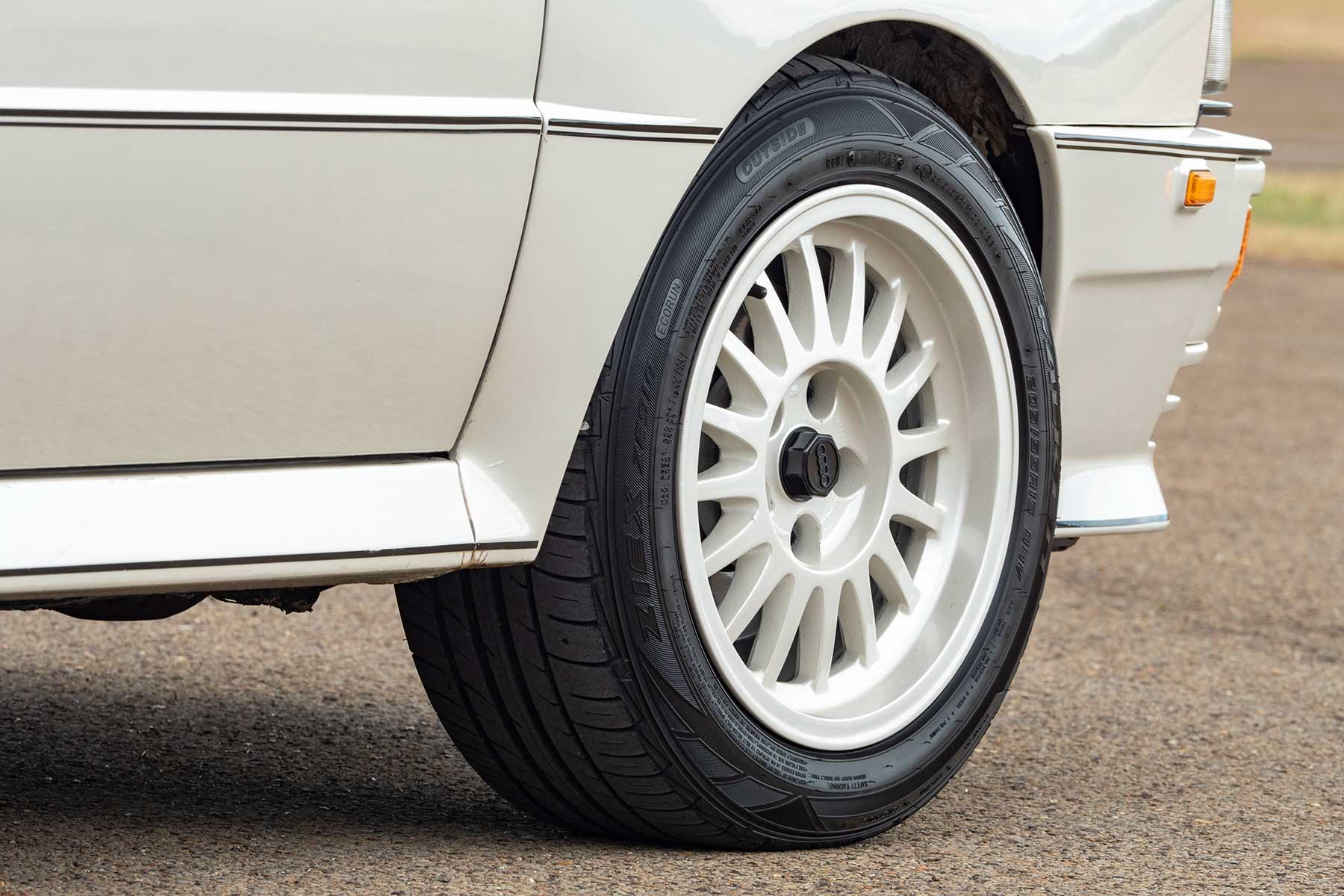
Modest 205/55 R15 Falkens provide a slender contact patch and serve as a reminder of the vicious cycle of ever-expanding modern wheel/brake/tyre sizes.
Never once did I wish for more grip or traction (the all-wheel drive taming the turbocharged power even on damp roads) and the flipside is a decent primary ride that handles the worst that a typical British back road can throw at it.
The Quattro is actually surprisingly well mannered, though cat’s eyes and potholes thud and rattle through the bodywork. It’s perfectly comfortable and the only weak spot is rack-and-pinion steering that’s slightly numb and slow to react just off-centre. In an age where the best hot hatches now have pin-sharp, instant responses, Audi’s granddaddy of athleticism feels just a little bit more docile as you thread it down your favourite back road.

Imagine how this must have felt four decades ago, though. Its combination of 2.2-litre turbocharged punch and all-wheel drive, boosted for the 1988 model year with the intelligent Torsen differential capable of shuffling torque front or aft split between 25:75 either way, must’ve been a revelation. The drivetrain is more than a match for the KKK turbocharged power delivery.
How Audi’s Quattro system revolutionised 4wd
Is the Audi Quattro practical?
The package of the Quattro is one of its most surprising facets. This isn’t a big car, at 4.4 metres long and 1.7m wide, but there is a lot of space inside. Although a three-door bodyshell, the rear seats are easily accessed and comfortable even for a brace of adults (ignore the third lap belt… squeezing five onboard is not recommended).
The rear bench is like a sofa, heavily angled backwards for a relaxing lounge. The front seats are upholstered in the same Quattro print material, with leather squab supports, wings and head rests. They’re grippy and hold you in place at the kind of speeds that this old-timer can produce.

Ah, the joys of a pre-touchscreen era! The Quattro’s is a practical cabin and everything is easy to operate (unless you’re looking for a USB port to charge a phone, of course!). There are numerous storage cubbies, including a vast compartment to the right of the wheel and slimline door pockets hold phones and keys.
One disappointment is the boot (opened by a lever in the B-pillar). It’s not particularly big and period Audi Quattro reviews noted how space was gobbled up by the loose space-saver spare wheel, the large 90-litre fuel tank and – in this Audi UK heritage example – a steering wheel security cover.
That vast petrol tank brings a seriously long range between refuels, even when averaging 22mpg like during our week with the car. Just watch out for fuel bills which in September 2022 reached £150 to brim a tank so voluminous…
Verdict
The original Audi Quattro is a joy to revisit. It represents a seismic shift in the Audi brand, the moment Ingolstadt transformed from mainstream volume player to seriously cool, technologically innovating premium brand. If any one car can justify the brand’s Vorsprung Durch Technik slogan, it’s this.
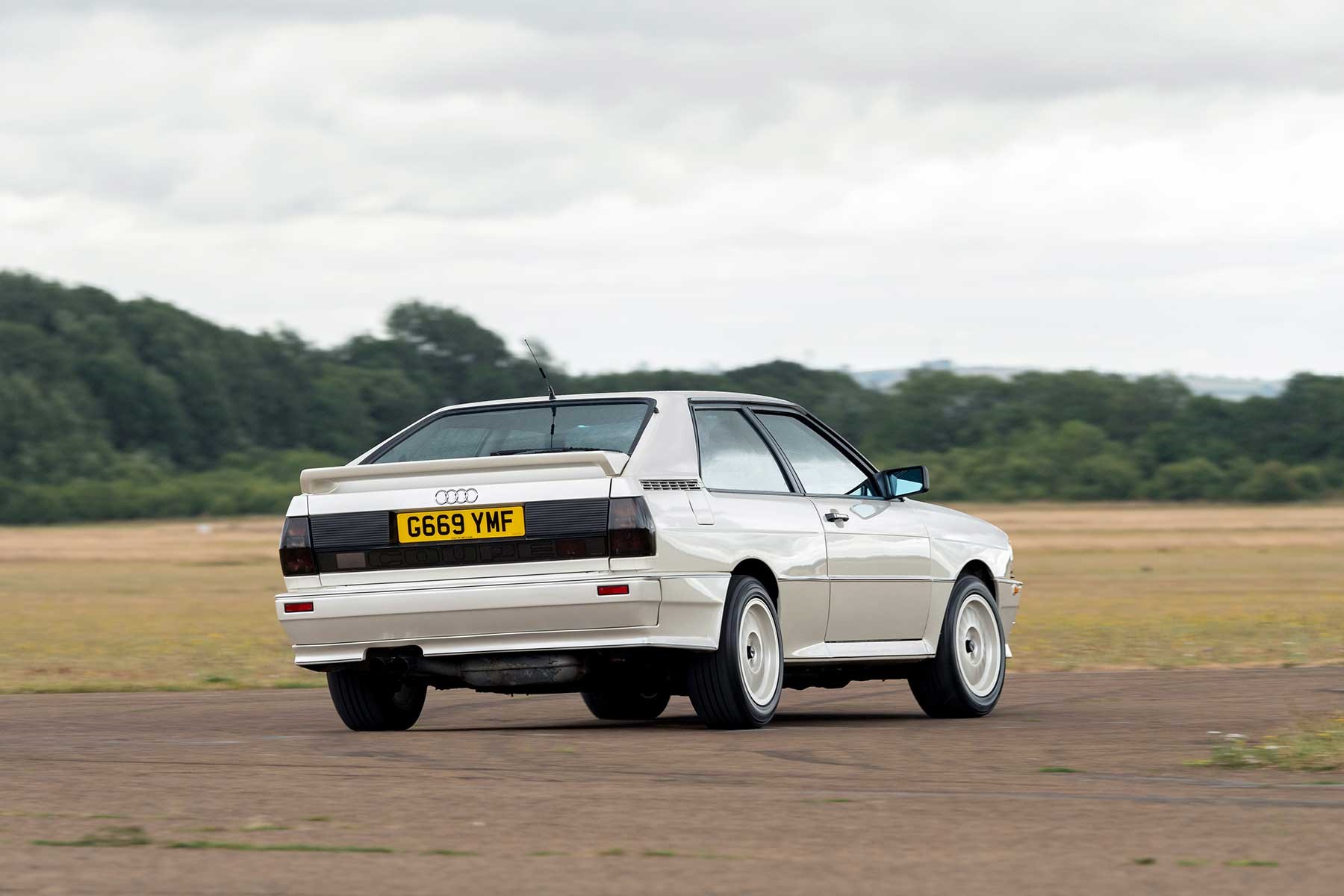
The Quattro was conceived under the watch of Porsche and VW Group scion Ferdinand Piech in his time as head of development at Audi, and his focus shines bright. A marriage of technical brilliance to a period wardrobe so sharp and handsome makes the Ur Quattro a focused sports car, even today, 42 years after it was first launched.
More Audi reviews